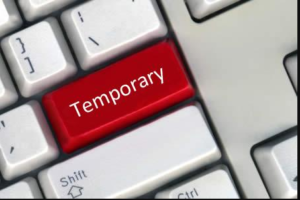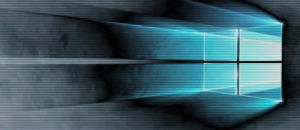Are you wondering to fix Windows 10 temporary profile? The users of Windows 10 or 7 lost access to their user profiles after installing KB4532693. After installing KB4532693, you may view a “You have been logged in with a temporary profile” error message after reaching the desktop PC. When it appears your desktop will be empty also your customized Windows settings reset to defaults or your user profile files missing. There are lots of cases like this wherein the OS fails to read the right user profile. If it occurs then your PC might have loaded a temporary profile which is identical to a newly created one in default settings.
Microsoft’s reaction to this problem has once again left much to be desired. Rather than confirming the signs to many media outlets. It can’t update the “Known issues” on KB4532693’s support page. It means that you might want to check pausing updates on your PC if you haven’t already get it. In this guide, we’ll discuss how to resolve a temporary profile in Windows 7.
Contents [hide]
Reasons To Load Windows 10/7 Temporary Profile
There are many reasons behind this, but mainly, it is the result of bad profile files and folders. Alternatively, some operations or anti-virus programs can show the loading of the profile. Also, Windows loads a temporary profile to provides the user access to the PC. When the temporary profile loads, it become the default boot setting for the PC. However, it means that when you begin your unit, you’ll be able to log into the temporary profile. If you want to fetch your personalized settings, then searching the temporary profile resolve on Microsoft Windows 7 is the best course of action.
How To Fix “logged in with a temporary profile” In Windows 10

Step 1:
Head over to the Windows 10 login screen. Then tap the Power icon under the right, then hit “Restart” while holding the Shift key.
Step 2:
When the Safe Mode begins, simply use the Start Menu to restart your computer again. This time, Windows will again reboot back into normal mode and your user profile should be backed up.
Well, the root cause of this issue appears to be down to the way in which KB4532693 makes modifications to the system. However, the installer appears to create a temporary user profile while applying to the updates. In some cases, that temporary profile doesn’t get erased when the installation ends. So you finish getting logged into it rather than your account.
Unfortunately, much remains unknown about the accurate cases in which the error occurs. Microsoft also admitted as much in its newest set of steps. It requested feedback on the steps given as “it helps Microsoft in analyzing the root cause.”
There’s a different possibility that the instructions above can’t work for you. Also, if they do, you might still find there is data loss from your profile. In this situation, use File Explorer to visit the “C:\Users” directory.
Check the folder with the name of your profile suffixed with a “.bak” or “.000” extension. If it exists, this might be a recovery of your user profile directory redirected before KB4532693 installed.
You can easily copy the contents of the directory back into your regular user profile folder (without the “.bak” extension) to back up your files.
How To Fix “logged in with a temporary profile” In Windows 7

In some situations, it helps to try restarting the PC. It is best for Windows to boot in your previous profile. However, if this does not fix the problem, you can then follow the steps given below to get rid of the issue.
Note: Before you perform any modification in the registry, remember you are confident that you can perfectly complete the process. However, the database is sensitive, and make also a punctuation mistake can corrupt your PC. So, we highly recommend you use Auslogics Registry Cleaner.
Automatically this tool search for redundant and damaged registry files. With a tap of a button, the Auslogics Registry Cleaner will fix the issue for you.
Step 1:
Initially, boot your PC then log into the temporary profile.
Step 2:
Tap the Start button.
Step 3:
Then launch the registry editor after writing “regedit” (no quotes) in the Search box.
Step 4:
Right-tap the regedit, then choose Run as Administrator.
Step 5:
Then head over to this path:
Computer \HKEY_LOCAL_MACHINE\ SOFTWARE\ Microsoft\ Windows NT\ CurrentVersion\ ProfileList
Step 6:
Then you must be able to view the list of profile names.
Step 7:
Check the two profiles with the identical name. One of those must end with .bak.
Step 8:
Keep in mind that the key with .bak at the end is an accurate, personalized profile. You are recently logged into the new profile with the identical key. Also, just rename the two files. Add “_new” (without quotes) at the last of the key for the temporary profile. Then erase the .bak from the exact profile key.
Step 9:
After you’ve completed the earlier step, now you can log off from the temporary profile.
Step 10:
Restart your PC and log in to your accurate profile.
After receiving your old user profile back, we recommend that you use Auslogics Disk Defrag Pro. As we’ve mentioned, some programs become slow down your profile’s loading process. It would be good to optimize your hard drive to make sure that you can’t face long startup times on your apps. Also, it enables you to maintain high HDD speeds using smart algorithms and boot-time defrag technology. Through this, programs will smoothly run and you can secure your PC from creating the new temporary user profile.
Method 2: Fix Temporary Profile
Here’s another method your Windows 7 PC loads a temporary profile. It means that your user profile is damaged. Your unit probably creating the new .bak registry key, securing the OS from reading your user profile properly. The possible fix for this is repairing the files after executing Check Disk. Just follow the instructions below:
Step 1:
Head over to your keyboard then hit Windows Key+R.
Step 2:
Input “chkdsk /f /r C:” (without quotes).
Note: “C:” indicates the drive where your user profile files are stored.
Step 3:
Wait until the program is repairing or scanning the damaged system files.
If Check Disk can easily find and resolve the affected files, especially the Ntuser files. Then you have got a good chance of receiving your old profile back. Alternatively, you need to resort to the other method.
Method 3: Create a New User Account

In this method, you need to create a new user account, log into it, and then transfer the data from your previous user profile to the new one. From a workgroup environment, you just locally create a new user name. It moves without saying that it is simpler and easier to follow the instructions for this case.
Alternatively, it can get quite difficult while creating a new profile in a domain environment. This is due to the old profile that exists on the domain server and there’s nothing goes wrong with it. Rather than that, creating a new domain profile might cause issues on corporate emails, shared permissions, and domain group memberships. Let’s take a short look at the cases separately.
Creating a New Account in a Workgroup Environment
Step 1:
Head over to the Computer Management or Control Panel and create a new user profile. Remember to add the new profile to the Administrators Group.
Step 2:
Then log into the new profile and Ctrl+C your data from your previous profile. You just want the following:
- My Documents
- Desktop
- Favorites
- Outlook PST files
- Outlook archive files
- Outlook Signature folder
Create Profile In a Domain Environment
You can create your new profile through the Computer Management or Control Panel.
Step 1:
Initially, log into the new profile, and then move the important data from your previous profile to the other location. Remember that you’ve copied all the folders or files because you’re going to remove your previous account.
Step 2:
Then in the Control Panel, tap System.
Step 3:
Choose the Advanced System Settings at the bottom of the left-bar menu.
Step 4:
When the System Properties window is open, simply tap the Settings button at the bottom of the User Profiles section.
Step 5:
Choose the corrupted user profile, and then tap the Delete button. This should delete the data from your previous profile, including the buggy registry keys.
Step 5:
Remember that the previous account has been properly erased after checking the C:\Users folder.
Step 6:
Restart your PC, then log in with a similar user name.
Step 7:
Your PC will then create a new user profile. Transfer your old data to this profile.
Conclusion:
Resolving the issue might get a bit difficult, but the first method is the best and it proves to work in most cases. If you have any other queries and questions on easily resolving the temporary profile in Windows 7 or Windows 10, let us know below!
Also Read:






